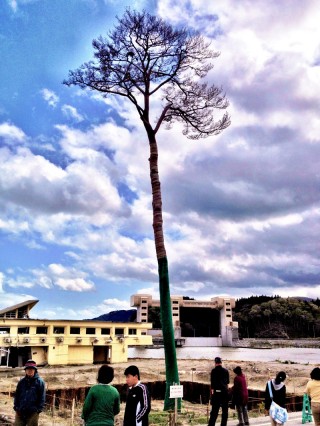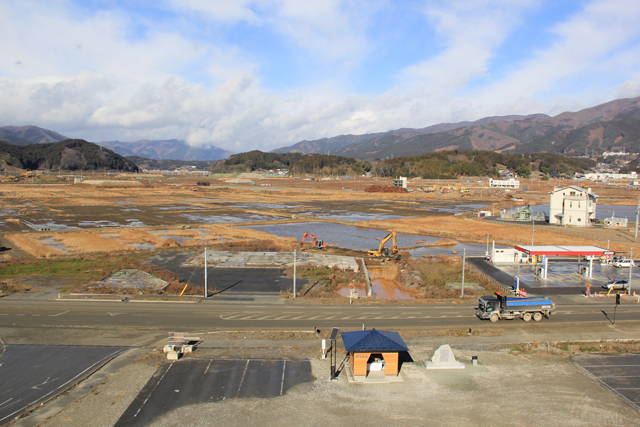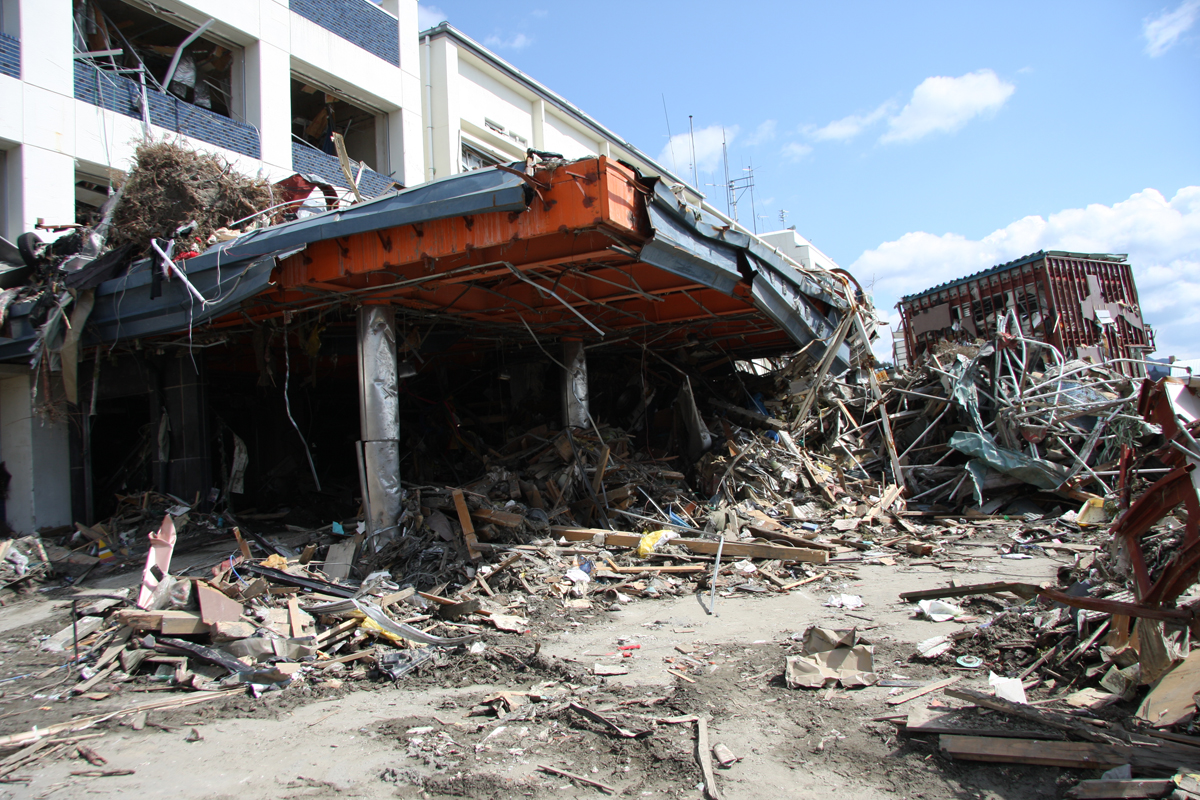Three years after the devastation of 3/11, the cities and the people of Tohoku are still recovering and rebuilding day by day. An American volunteer based in the city of Rikuzentakata discusses the ways in which we can still contribute—ways in which we might not have thought.
By Alec Jordan
There have been many tributes left behind since that wall of water leveled the Iwate Prefecture city of Rikuzentakata: the high school girl who came to play her trumpet at the site of the house where her mother and sister died; a cafe and jazz bar owner whose business was destroyed built a series of colorful cottages to replace temporary housing and to memorialize what he had lost; and a solitary pine from a forest of trees, the only one left standing after the forest was tossed down like so many matchsticks. Dubbed the Miracle Pine, it became a symbol of persistence for the people of the city and the Tohoku region itself.
Three years later, none of us have forgotten the damage that the tsunami and earthquake did, but most of us don’t have to live on a daily basis with the reality that comes with the continued rebuilding. In Rikuzentakata, this process is still under way. New public buildings must be constructed and permanent housing is needed, to be certain. However, as Amya Miller, public relations officer for the city explained, perhaps the most important thing for the people of Rikuzentakata—and the people of the other cities along the coastline—is a sense of connection to the rest of Japan.
Miller is an American woman who has worked as a full-time volunteer public relations officer for the city for more than two years. Raised in Japan, she came to volunteer after the earthquake and tsunami in March 2011. Her volunteer work brought her to the region, and she chose to stay and work with the city.
Miller said that financial support is still a necessity, particularly because government support for rebuilding is limited in many cases, and the destruction in Rikuzentakata was so complete. But one way for people to support the city and the region is simply to visit.
While many people did travel north to assist in whatever ways they can, and many still do, Miller explains that tourists can provide another kind of aid. The idea of the site of a natural disaster becoming a tourist destination is a delicate issue. However, Mayor Futoshi Toba of Rikuzentakata explained, “People often ask me how we feel about visitors coming to town, and our collective answer is, ‘Yes! Please stop by.’ You seeing our city first hand not only means we know you took the time to visit, but it’s also good for you. Being here is the best way for you to understand and connect.”

Although the Miracle Pine did fall, this symbol of persistence has been rebuilt, and stands once again
(Photo by Yuichi Kosio, via Wikimedia Commons)
And, as tourists, we often forget the influence we can have on the places that we visit, even in intangible ways. If you’ve ever visited a more remote place in Japan, or gone to a restaurant in Tokyo that rarely serves foreigners, you might get a small sense of what this is like. A brief visit can become the topic of conversations for the next several days. That feeling is multiplied tenfold for the people of this rebuilding community. “For the people of Rikuzentakata, your presence as a foreign visitor means more than you could imagine. It gives them a source of inspiration and strength. Of course, if you’re in the mood to be an instant celebrity, you’ll have that. But it will be something that the people of the city won’t soon forget. It will be something that they will be talking about for weeks.”
Rather than a luxurious stay and a heavy travel itinerary, a visit to Rikuzentakata is more about taking in the land and meeting people. One of the most powerful sights around Rikuzentakata is the Miracle Pine. The tree finally succumbed to the heavy salinity of the soil following the tsunami, but a tree-shaped monument has been constructed, which contains part of the original tree at its top. Finally, the interdenominational memorial hall that was built in 2013 is a peaceful location for remembrance. Aside from this, Miller recommends “walking the town, to get a sense of the rebuilding efforts, and talking with the people of our city.”
Rikuzentakata can be reached by bus from Ichinoseki. To get there from Tokyo, take the Tohoku Shinkansen to Ichinoseki, and transfer to a bus from there. The Capital Hotel, which was destroyed in the tsunami, has been rebuilt on a hill and looks out over the remains of the downtown area. (www.capitalhotel1000.jp) You can get an English map at the hotel that contains a list of restaurants in Rikuzentakata.
A small, portable way to commemorate the work being done at Rikuzentakata are keychains being made through the 瓦Re: KEY HOLDER project. To make these decorative keychains, pieces of plastic debris from the wreckage (which have been tested for radiation) are sanded and polished into a collection of smooth, multicolored shapes, which are both colorful conversation pieces and evocative reminders. Proceeds from the sale of the pieces go to support the communities of Rikuzentakata. You can find them at: http://www.11shokunin.com/keyholder.
The Lasting Effects of 3/11
Two and a half years after the March 11, 2011, quake and tsunami, 103,600 survivors of the disaster still live in temporary housing units in Iwate, Miyagi and Fukushima prefectures.*
Tohoku population 2010: 9,335,636
Tohoku population 2013: 9,109,167
Total killed = 15,884
Total missing = 2,363
Total injured = 6,147
Collapsed buildings = 127,290
Half collapsed = 272,788
Partially damaged = 747,989
Estimated damage = ¥25 trillion ($300 billion)
Debris swept off shore = 5 million tons
(As of February 10, 2014 by National Police Agency of Japan)
*AsiaNewsNet
Main Image: Rikuzentakata, 2014 (courtesy of Amya Miller)
Updated On December 26, 2022










